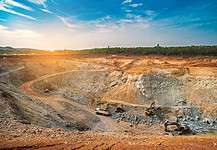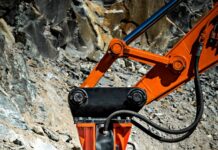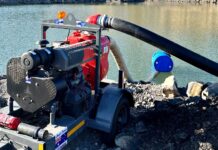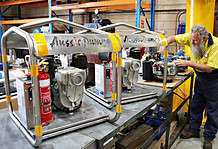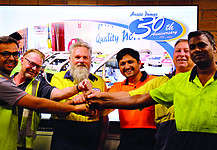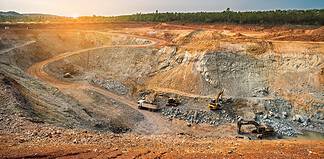IT goes without saying that for safety reasons, solid ventilation systems need to be in place in mining environments, whether above or below the ground.
Ventilation is the control of air movement, its amount, and direction, and although it contributes nothing directly to the production phase of an operation, the lack of proper flow can cause lower worker efficiency and decreased productivity, increased accident rates, and even absenteeism.
Air is necessary not only for breathing, but also to disperse the chemical and physical contaminants such as gases, dusts, heat, and humidity.
Underground mine ventilation provides a flow of air to the workings of a mine of sufficient volume to dilute and remove dust and noxious gases (typically nitrous oxide, sulphur dioxide, methane, carbon dioxide and carbon monoxide) and to regulate temperature.
The source of these gases are mainly the equipment that runs on diesel engines, the explosives used for blasting, and the orebody itself.
In Australia, as well as in most of the world, mine ventilation
practice is heavily regulated, aimed at diluting factors such as the diesel emissions, blasting fumes, radiation, dusts, battery emissions, and many other contaminants.
To ensure adequate ventilation of a mine, provision is made for suitable paths (airways or air courses) for the air to flow down the mine to the working places, and suitable routes out of the
mine when it has become unsuitable for further use.
The primary ventilation system thus consists of an intake structure through which the fresh air passes, the mine workings, and an exhaust system where the air passes after having ventilated the working places of the mine.
Mine fans are vital to control the air flow, and are installed on intake airshafts, return airshafts, or both, either on the surface or underground.
Fitzpatrick Engineering
The largest component of the operating cost for mine ventilation is electricity to power the ventilation fans, which may account for one third of a typical underground mine’s entire electrical power cost.
So it’s essential that when a mining company builds fans at its sites, it gets value for money: it needs to ensure the fans operate at maximum capacity suited to the working conditions of the respective sites.
That’s where Fitzpatrick Engineering comes in.
Established in 1984, the Sydney-based company has earned a worldwide reputation for designing and producing a wide range of quality centrifugal and axial flow fans, dampers and silencers for industrial, mining and minerals processing, both in Australia and overseas.
According to company spokesman Steve Tran, Fitzpatrick manufactures fans ranging from small units weighing around 100kg with a motor power of just a few kW, to fans weighing 20t with a rotating impeller mass of 4800kg.
Types of fans
The company’s centrifugal fans use wheels normally mounted in a fan or blower housing.
The air enters the housing inlet, turns 90o and is exhausted out of the housing discharge.
They’re all robust, welded with steel sheets and plates and reinforced with angle iron frames.
Steve said the company’s fans included models with aerofoil, radial tip, and backwards-inclined blades, all of which are suited to varying operations.
“One could be a high mass flow fan, one could be a high pressure fan,” he said.
“They are used in different applications, depending on what the customer requirements are.
“For mining specs, the sites usually involve moving large volumes of air, but we’re not limited to one industry or the other.
“We can do just one massive fan, or radial and backwards inclined blade fans that can move large volumes of air.”
> Material handling impellers
These fans have straight radial blades with open impellers arranged like a paddle wheel, mostly used in materials-handling operations.
Eight designs cover high to very low flow rates, including the RM series high flow rate standard units for 5kPa, the RMB high flow rate with backplate for handling stringy material, and the MH series for low to very flow rates.
> Radial-tipped blade and radial blade fans
Also termed curved blade fans, Steve said radial-tipped blade fans are used in moderate-volume flow rate applications when the pressure requirement is moderately high and erosion resistance is preferable.
This design reduces the potential for dust build-up on the underside of the blades in applications with medium amounts of gas-borne dust.
“It offers higher pressure and more compact design than aerofoil and backward-inclined impellers in exchange for lesser efficiencies and increased power demand,” Steve said.
These rugged fans offer high pressure capability with average efficiency, and are often fitted with erosion-resistant liners to extend rotor life.
They’re generally used when high quantities of abrasive dust are present in the gas stream, or when very high gas temperatures are expected.
The radial tip series models that Fitzpatrick manufactures are applicable for a range of high flow rate pressures up to 12kPa or low flow rate pressure up to 20kPa
> Backwardly inclined aerofoil blade and plate fans
Aerofoil impellers provide uniform, high volume airflow with low power consumption for optimum efficiency using the same aerodynamics that create flight.
As air approaches the blade’s leading edge, the stream splits and travels above and below the blade.
It is then deflected across the convex curve along the top of the blade and along the flat or concave curve on the bottom, flowing downward over the sharp trailing edge as it leaves the blade.
The lift developed from the blade is a contributing factor to reducing power consumption as it rotates which is why it has the highest efficiency compared to other centrifugal fan designs.
“Aerofoil fans are the most commonly used to move large volumes of air,” Steve said.
“At higher flow rates, they become more efficient compared to other types of blades.”
As the fan rotates a pressure difference is created on the impeller blades.
On the leading, convex side of the impeller blade, a positive pressure is created as the rotational motion of the impeller imparts a force in the air.
The blade pushes the air outwards, exiting in a radial direction.
On the concave side of the impeller blade, a negative pressure is created as the fan rotates, drawing air into the space between the blades.
This air is then picked up by the following blade and forced outwards radially in a continuous process.
The suction side of the impeller blade draws air from the centre of the fan which results in a directional change of the airflow between the inlet and the exhaust of 90o.
Steve said these fans were used extensively for continuous service at ambient and elevated temperatures in forced and induced draft applications in the metals, chemical, power generation, resource recovery, incineration and other industries throughout the world.
The backwardly-inclined plate blade fans, meanwhile, are designed to handle large volumes of relatively clean air, commonly used for industrial air supply and exhaust applications.
Fitzpatrick Engineering ensures they are constructed heavily with hardened alloy steel plate.
They have a performance air flow of 344,300 CFM (584,965 m3/hour), and are capable of coping with non-sticky abrasive dust loads.
This design is a cost-effective alternative to the aerofoil design, but with flat plate blades instead of curved, resulting in a slightly lower efficiency, compensated by the easier fitting of liners and manufacturing process.
Fitzpatrick is in the house
Steve said that the company is 100pc Australian-owned and carries out all design, development and manufacturing of its products in Australia.
“All the fabrication is done in-house, including rolling, pressing, welding, as well as the machining and painting,” he said.
“This gives us the flexibility and capability to take on custom projects within the air building fan industry or outside.
“Also, this means that if there’s a shutdown or emergency, we have room to allow for that sort of work.”
The company boasts around 40 standard aerodynamic fan designs, with the list continuing to grow as it develops new designs or adds further options to existing designs to enhance their performance and versatility.
The workshop has two areas of operation: steel fabrication and machining, and design and manufacture.
Both combine to improve the ability to reduce production cost and allow the manufacturing process to run more smoothly and effectively.
“Executing these two areas under one roof has resulted in much quicker turnaround,” Steve said.
Qualified engineers are employed to ensure customers choose the right fan for their application with minimum supply lead time and best-in-class performance.
The centrifugal fans are engineered to operate with high aerodynamic efficiency, smooth running low vibration/noise levels and a compact, low profile footprint.
All Fitzpatrick products are manufactured within an ISO 9002 quality control system, airflow and sound-tested in DIN 45635 chambers, and balanced to ISO 1940 standard G2.5 and G6.3 where required.
The company acknowledges that the customer is king, and can manufacture units to the clients’ wishes.
“If a 1m diameter blade fan is not sufficient, we can scale up to 2m,” Steve said.
“Generally though, the bigger the blade, the less you need to run the speed, for safety reasons.
“For example, you can run a 1m fan up to 3000rpm … but using something bigger, something that fast, is asking for a disaster.
”For something around 2m, we might go up to 1000 rpm; it’s certainly something we take into consideration in the calculations.”
Indeed, when it comes to gauging performance, the company provides performance graphs to clients for each model which depicts their ability to push at certain flows at particular pressures.
“We match fan requirements with the models to make selection easier,” Steve said.
The company also incorporates some special features into their fans.
“We incorporate the effects of the operating environments into the build,” Steve said.
“For example, we ensure our underground fans are explosion-proof rated.
“We use brass cages around whole components and moving parts to avoid steel-on-steel contact.
“We are aware that any spark or gas leak could lead to a catastrophe, so we make sure the fans are certified, mining-spec approved and made of anti-sparking material.”
The company can equip EXD electric motors for the fans, which are specifically made to be explosion-proof and are used widely at mining sites and other hazardous areas.
“Motors range in size from small to huge, from 7.5kw to 1000kw, which of course would move a large amount of air,” Steve said.
Global following
Fitzpatrick Engineering is proud to claim that it is one of the country’s leading manufacturers of high quality in-house industrial fans, backed by qualified engineers with extensive experience in leading technology innovation.
It boasts robust engineering reliability, quality systems, and supplies products to anywhere in the world.
With that sort of uncompromising quality and wide support from various resource sectors, you might even say that there are literally many, many fans of this company’s many, many fans.
More information:
Fitzpatrick Engineering
Phone: (02) 4677 1220
Fax: (02) 4677 1263





